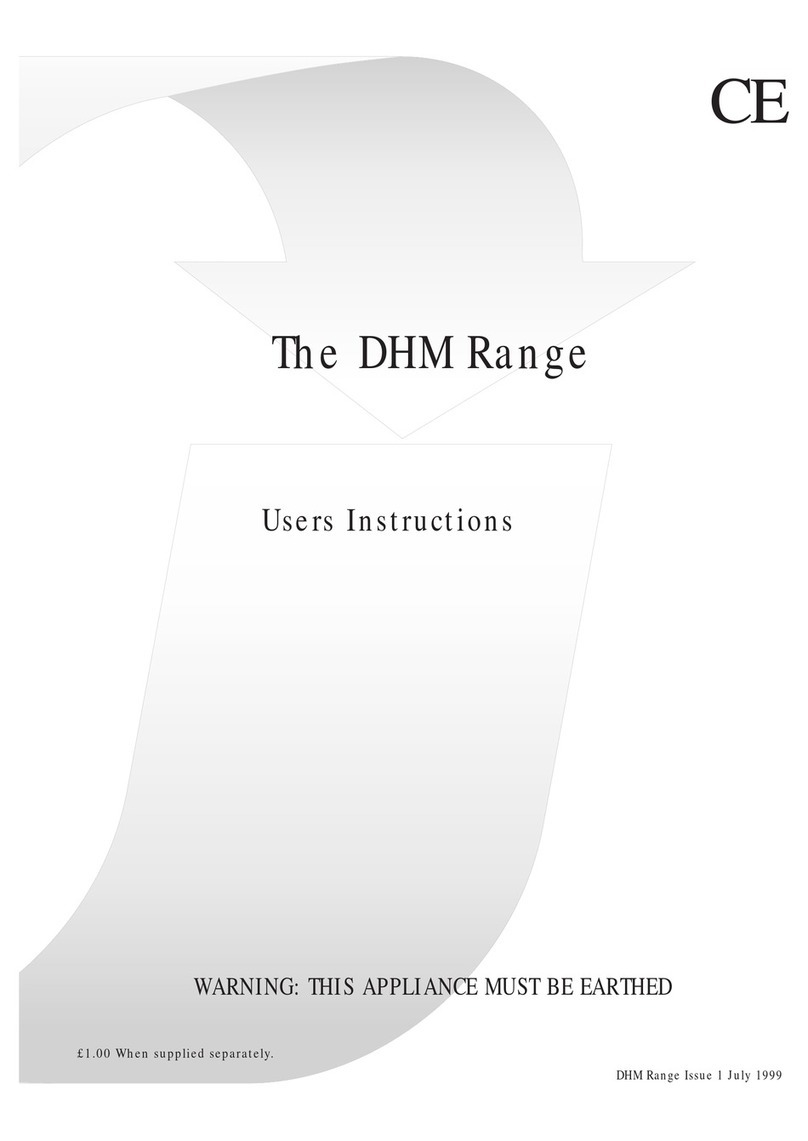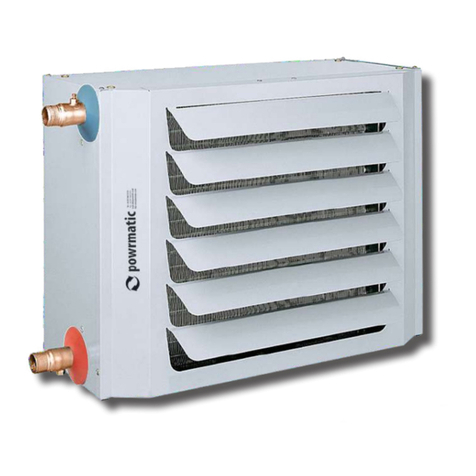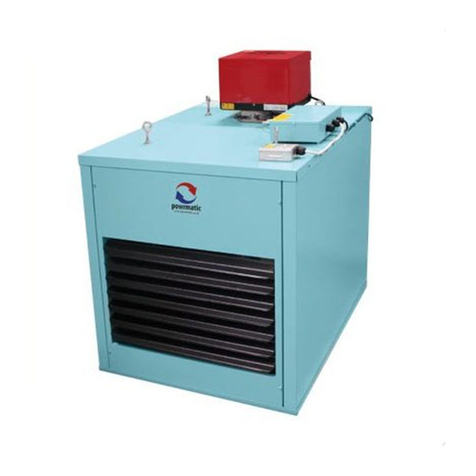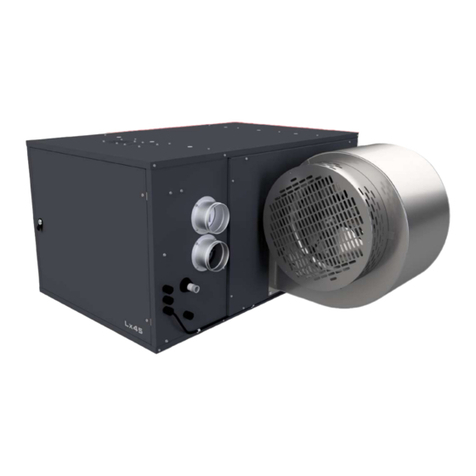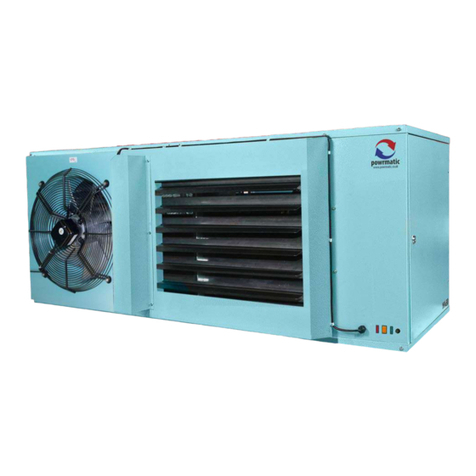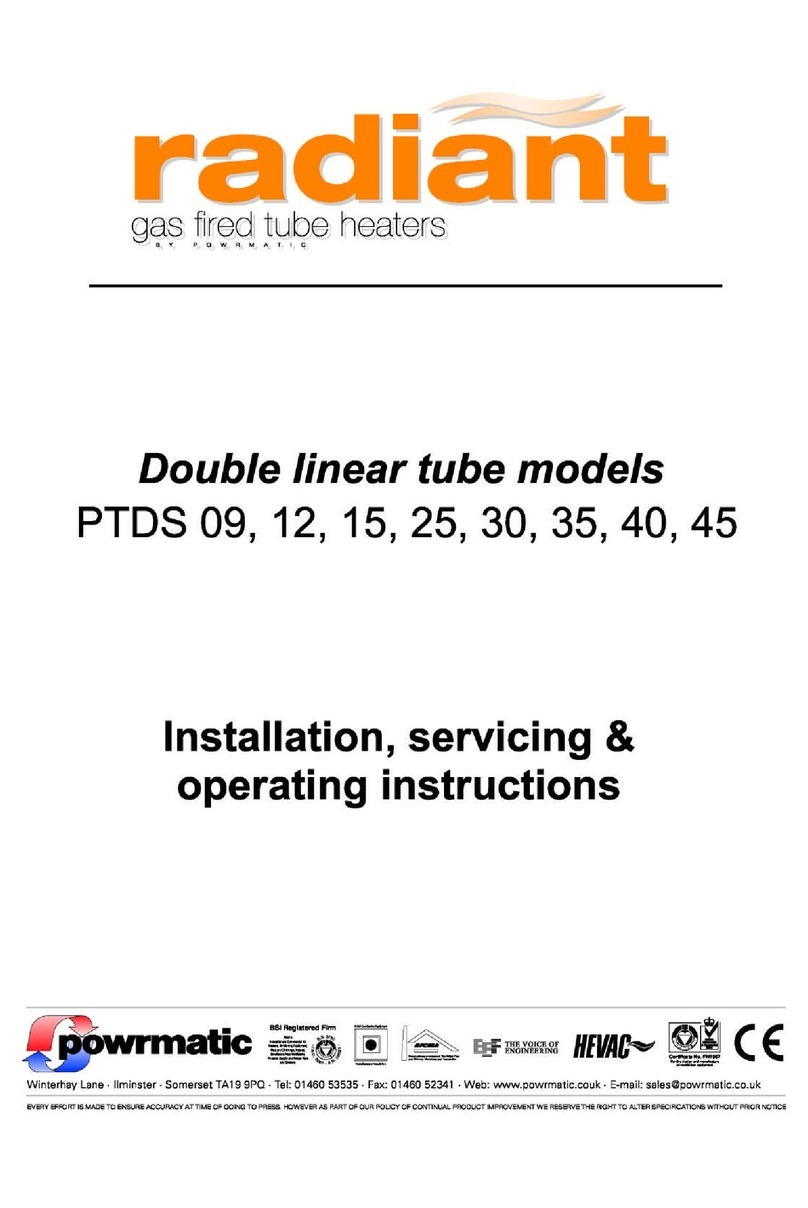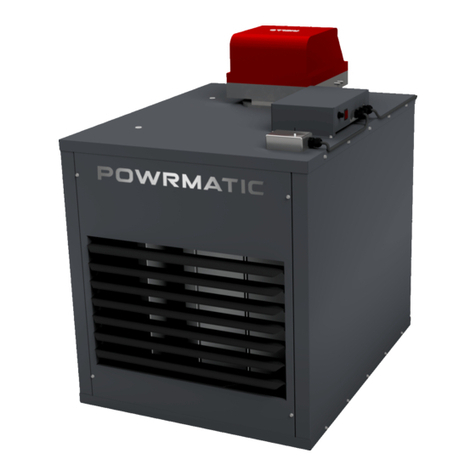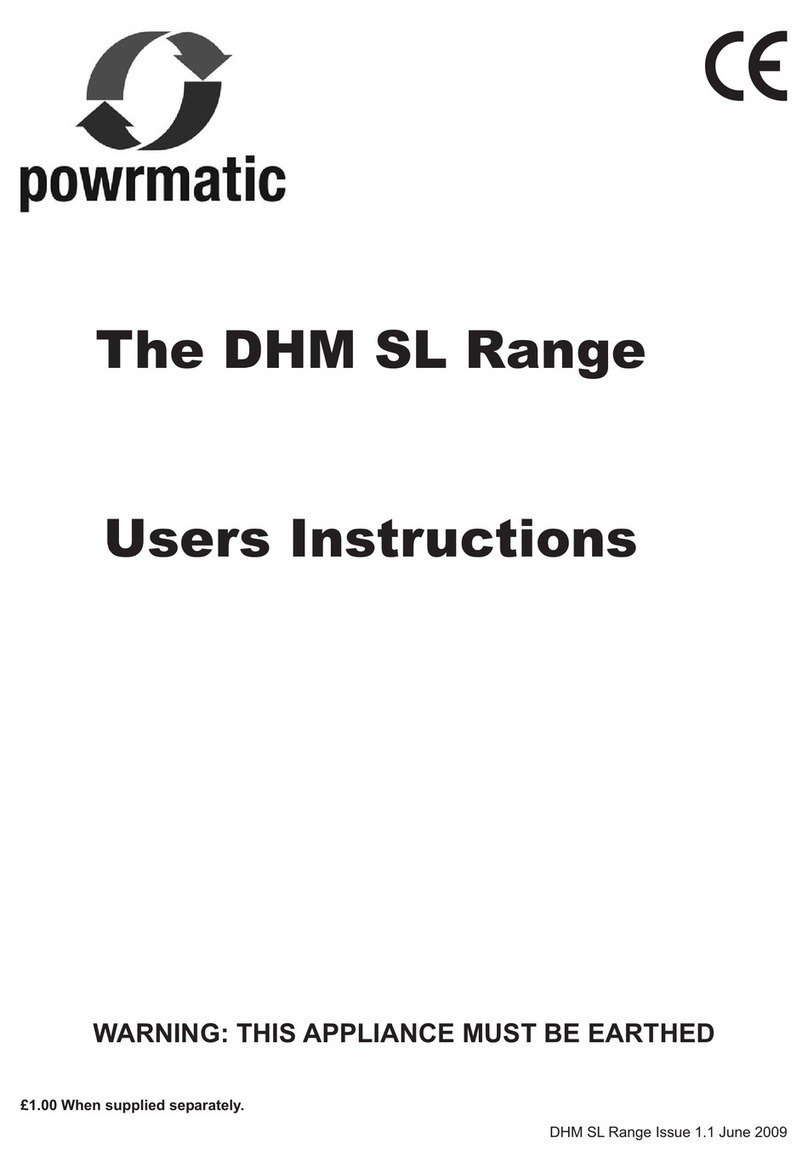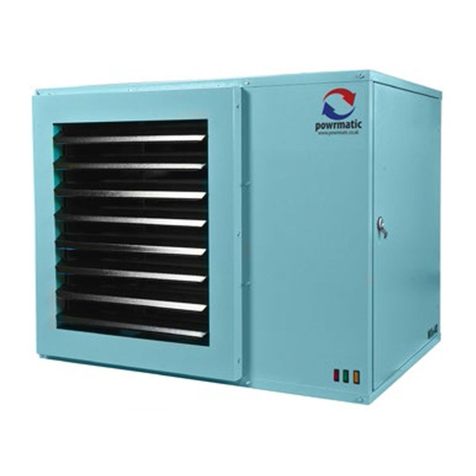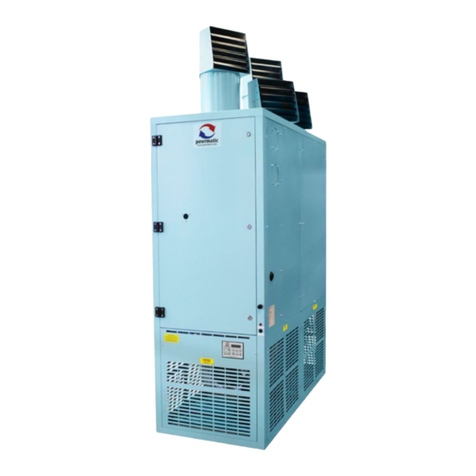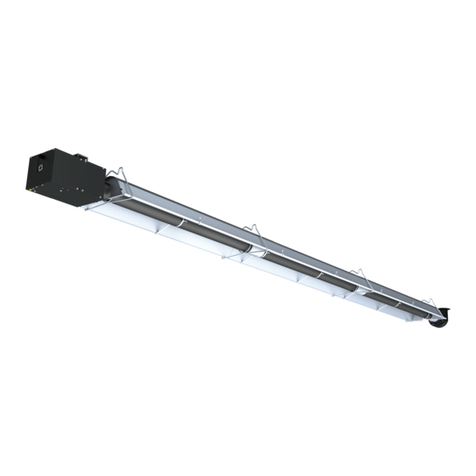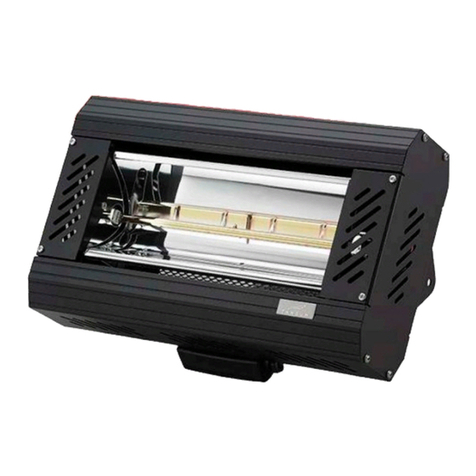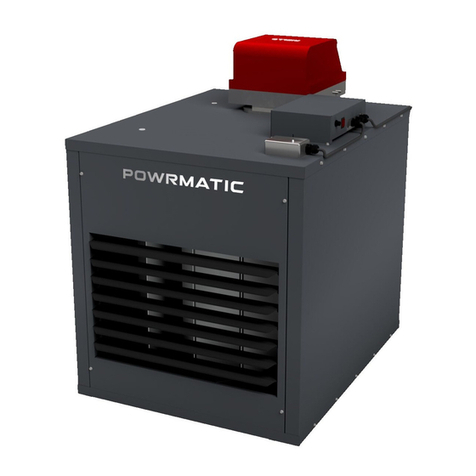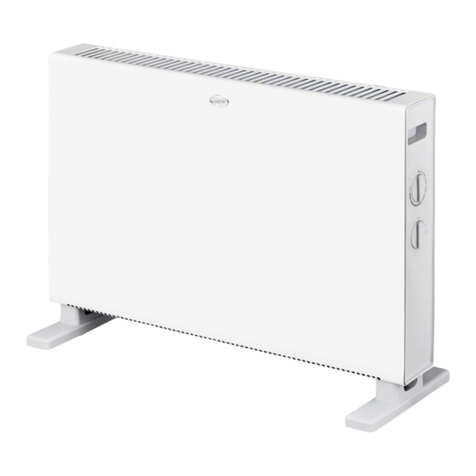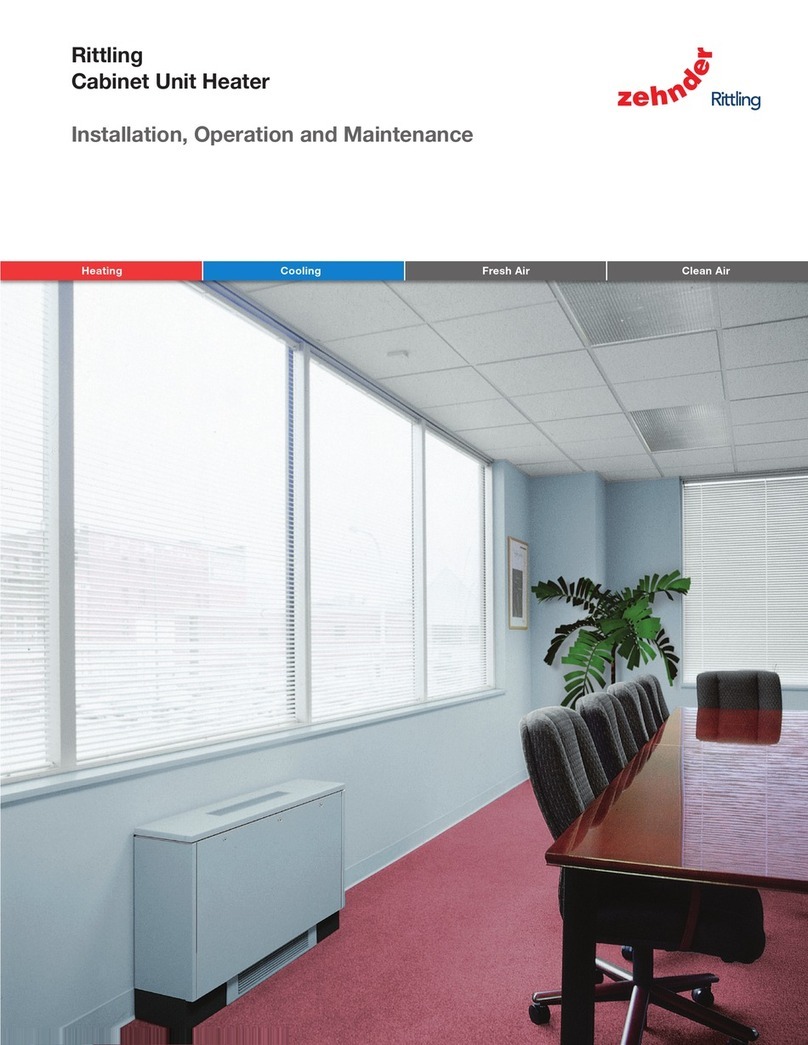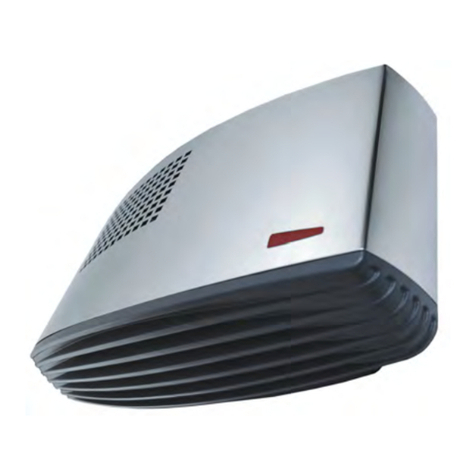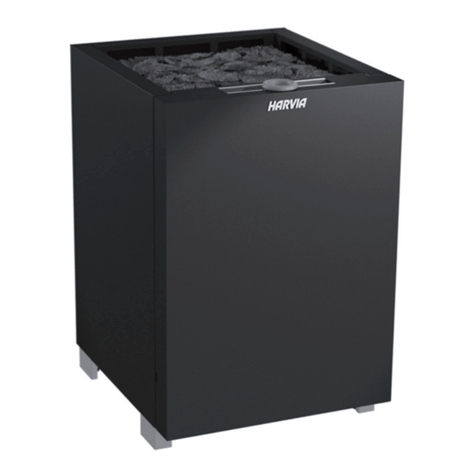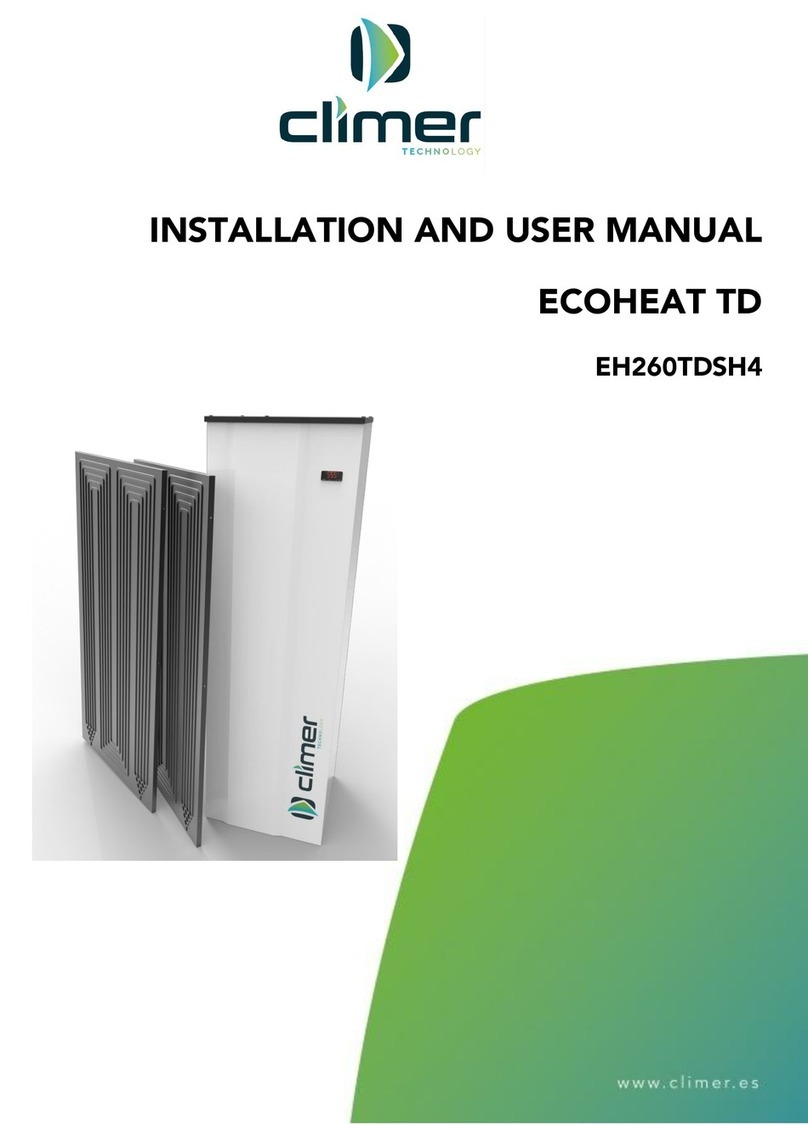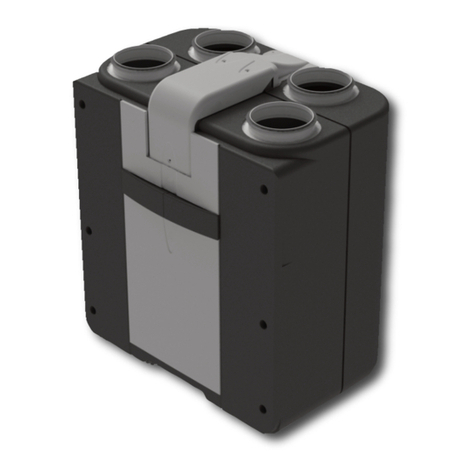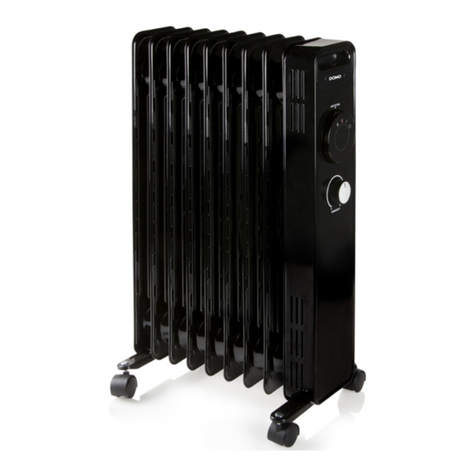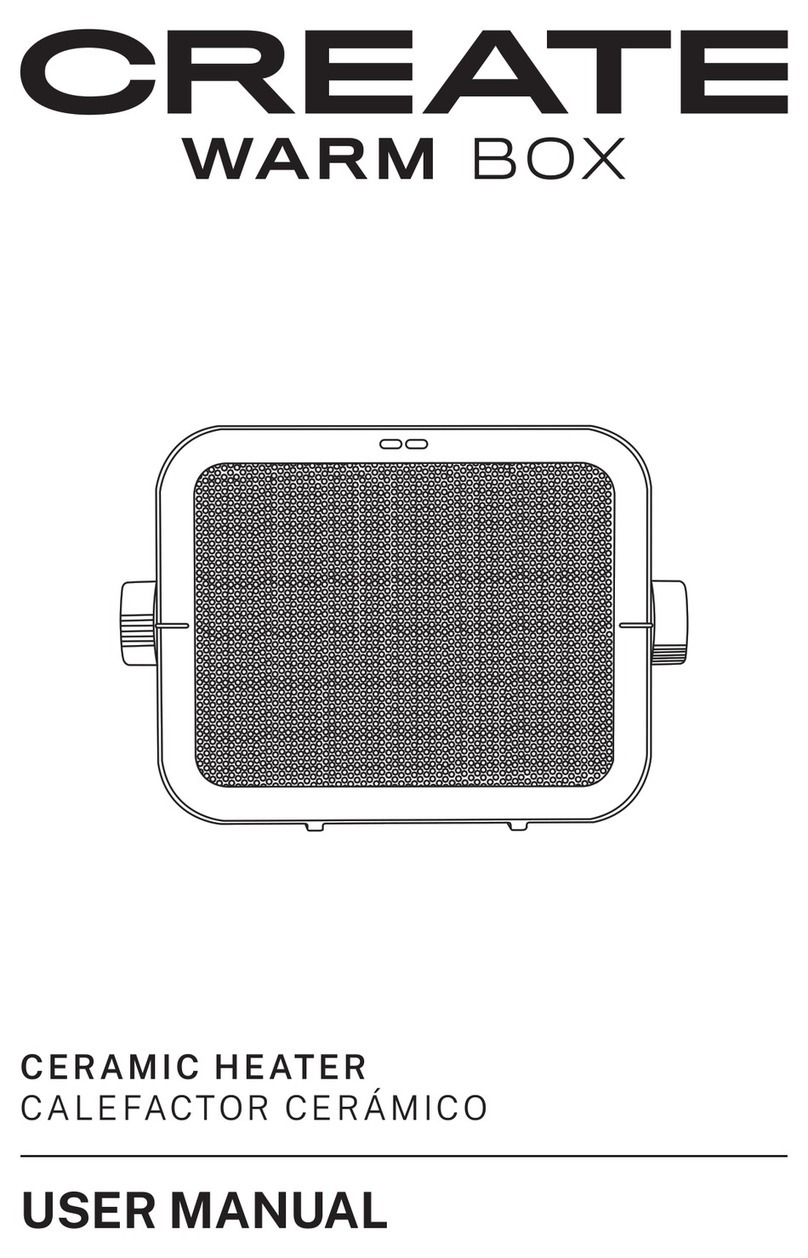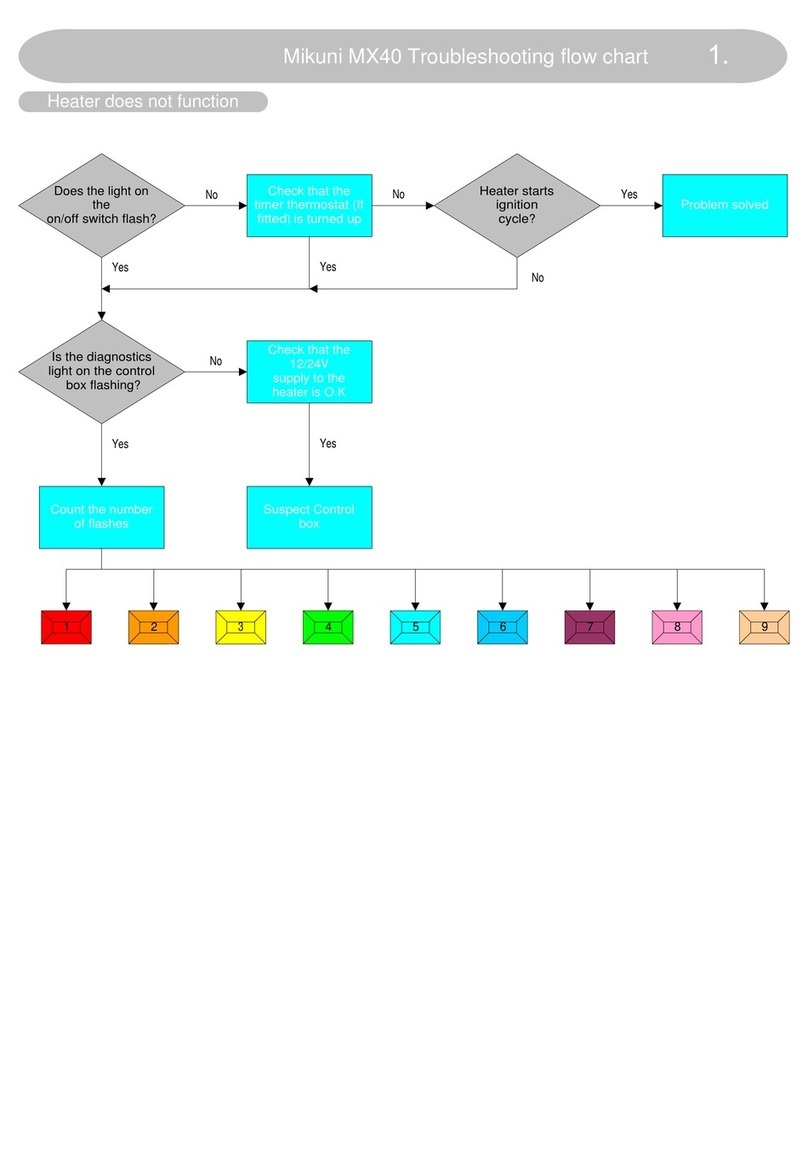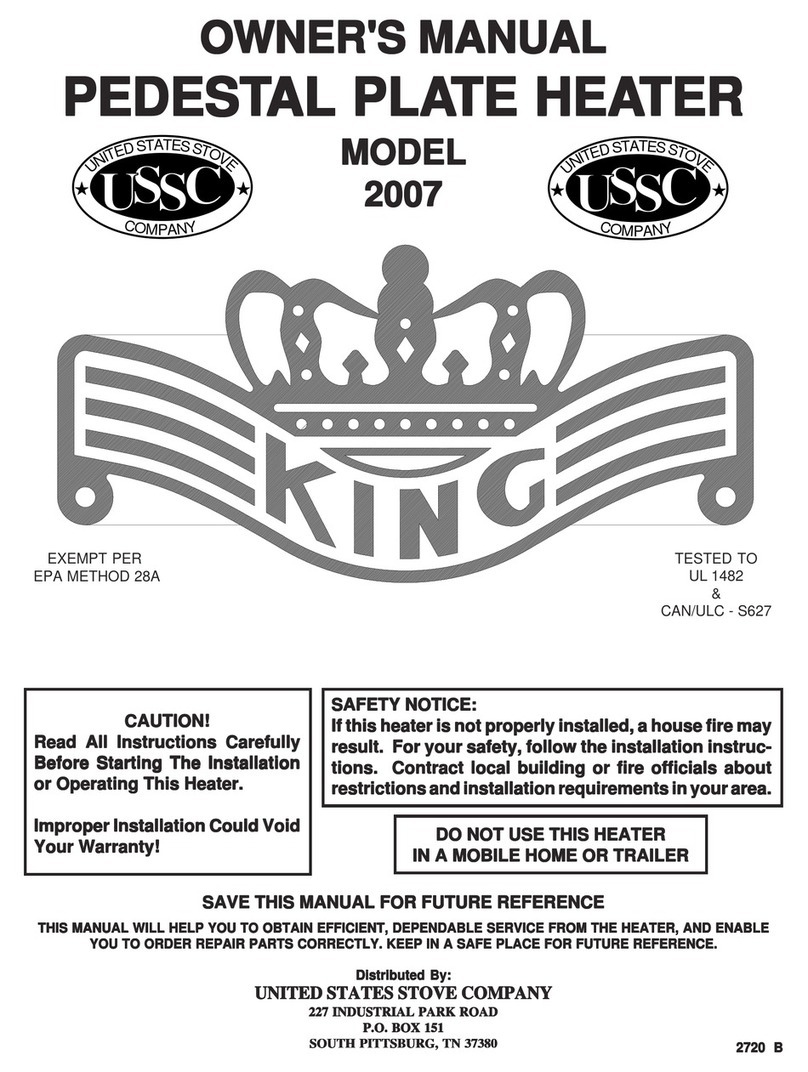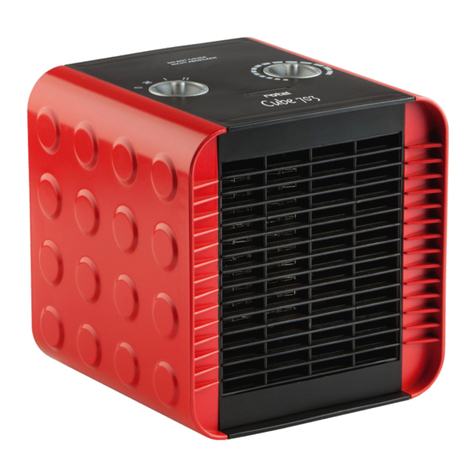
(1) for heaters of heat input less than 60 kW, the total
minimum free area shall not be less than 4.5 cm2per
kilowatt of rated heat input.
(2) forheatersofheatinput60kWormore,thetotalminimum
free area shall not be less than 270cm2plus 2.25 cm2
per kilowatt in excess of 60 kW rated heat input.
The air vent(s) should have negligible resistance and must
not be sited in any position where it is likely to be easily
blocked or flooded or in any position adjacent to an extraction
system which is carrying flammable vapour.
Where the air heater(s) is to be installed in a plant room the
air heater(s) requires the plant room housing it to have
permanent air vents communicating directly with the outside
air, at high level and at low level. Where communication with
the outside air is possible only by means of high level air
vents, ducting down to floor level for the lower vents should
be used.
Air vents should have negligible resistance and must not be
sited in any position where they are likely to be easily blocked
or flooded or in any position adjacent to an extraction system
which is carrying flammable vapour.
Grilles or louvres should be so designed that high velocity
air streams do not occur within the plant room.
The basic minimum effective area requirements of the air
vents are as follows:
(a) Low Level (inlet)
(1) for heaters of total rated heat input less than 60
kW: 9 cm2per kilowatt of rated heat input;
(2) for heaters of total rated heat input 60 kW or more:
540 cm2 plus 4.5 cm2per kilowatt in excess of
60 kW total rated input.
(b) High Level (outlet)
(1) for heaters of total rated heat input less than 60
kW: 4.5 cm2per kilowatt of rated heat input;
(2) for heaters of total rated heat input 60 kW or more:
270 cm2plus 2.25 cm2per kilowatt in excess of
60kW total rated input.
3.6 Air Distribution System
The following notes are of particular importance.
For free-blowing units it must be taken into account that
the buoyancy of the heated air leaving the heater and air
patterns within the space being heated will modify the air
throw pattern achieved. In buildings having a low heat loss
where single units are required to cover a large floor area
and in buildings with high roof or ceiling heights Calecon
thermal economiser units should be fitted to ensure even
heat distribution and minimise stratification respectively.
Care should be taken to avoid impeding the air throw with
racking, partitions, plant or machinery etc.
For ducted units all delivery and return air ducts, including
air filters, jointing and any insulation or lining must be
constructed entirely of materials which will not contribute
to a fire, are of adequate strength and dimensionally stable
for the maximum internal and external temperatures to which
they are to be exposed during commissioning and normal
operation. In the selection of materials account must be
taken of the working environment and the air temperatures
which will result when the overheat limit thermostat is being
commissioned. Where inter-joist spaces are used as duct
routes they should be suitably lined with a fire-resisting
material.
A full and unobstructed return air path to the air heater(s)
must be provided.
If the air heater(s) is installed in a plant room the return air
intake(s) and the warm air outlet(s) from the heater(s) must
be fully ducted, in to and out of the plant room to avoid
interference with the operation of the flue by the air circulation
fan.
The openings in the structure of the plant room through
which the ducting passes must be fire stopped.
Care must be taken to ensure that return-air intakes are kept
clear of sources of smells and fumes, and in special
circumstances where there is any possibility of pollution of
the air by dust, shavings etc., precautions must be taken by
carefully positioning return air intakes and by the provision
of screens to prevent contamination.
In addition, where there is a risk of combustible material
being placed close to the warm air outlets, suitable barrier
rails should be provided to prevent any combustible material
being within 900mm of the outlets.
3.7 Electrical Supply
Wiring external to the air heater must be installed in accordance
with the I.E.E. Regulations for Electrical Installations and
any local regulations which apply. Wiring should be completed
in flexible conduit.
Heaters NCA-G 100 - 300 are supplied by 230V - 1ph, 50Hz.
The method of connection to the main electricity supply
must facilitate the complete electrical isolation of the air
heater(s) and the supply should serve only the air heater(s).
The isolator must have a contact separation of at least 3mm
in all poles. The method of connection should be provided
adjacent to the air heater(s) in a readily accessible position.
See the accompanying wiring diagram for the heater electrical
connections.
4. Installation of Air Heater(s)
4.1 General
Before installation, check that the local distribution
conditions, nature of gas and pressure, and adjustment
of the appliance are compatible.
The air heater must be installed in accordance with the rules
in force and the relevant requirements of any fire regulations
or insurance company’s requirements appertaining to the
area in which the heater is located, particularly where special
risks are involved such as areas where petrol vehicles are
housed, where cellulose spraying is carried out, in wood
working departments etc.
The following minimum clearances for installation and servicing
must be observed.
To the front The depth of the heater
To the rear 1.0m
To at least one side 1.0m
Above the heater 1.00m
Any combustible material adjacent to the air heater and the
flue system must be so placed or shielded as to ensure that
its temperature does not exceed 65°C.
IMPORTANT:
1. No air heater shall be installed where there is a foreseeable
risk of flammable particles, gases vapours or corrosion
inducing gases or vapours being drawn into either the
heated air stream or the air for combustion. In such
cases installation may only proceed if the air to be
heated and the air for combustion are ducted to the
heater from an uncontaminated source preferably outside
the building. In certain situations where only airborne
particles are present it may suffice to fit filters on the
air inlet ducts of the heater. Advice in these instances
may be obtained from Powrmatic Ltd.
4.2 Fitting the Air Heater
The heaters must be installed on a level noncombustible
surface.
If noise levels are of particular importance the heater should
be insulated from the structure of the building by installing
it on suitable anti-vibration mountings. In all such cases it
is essential that all gas, duct, electrical and flue connections
to the heater are made with flexible connections to maintain
continuity of connection. In the case of the flue connection
single wall stainless steel flue is deemed to flex sufficiently
to meet the requirements.
4













